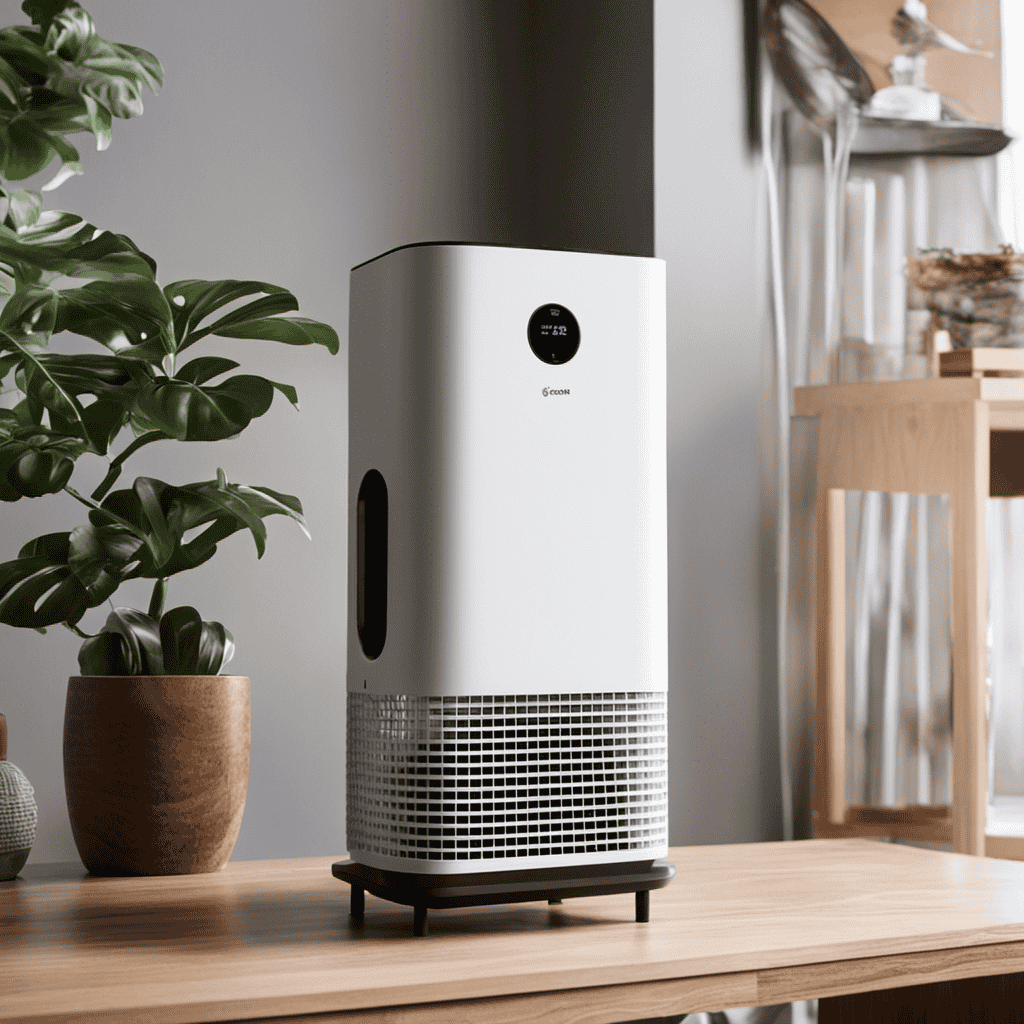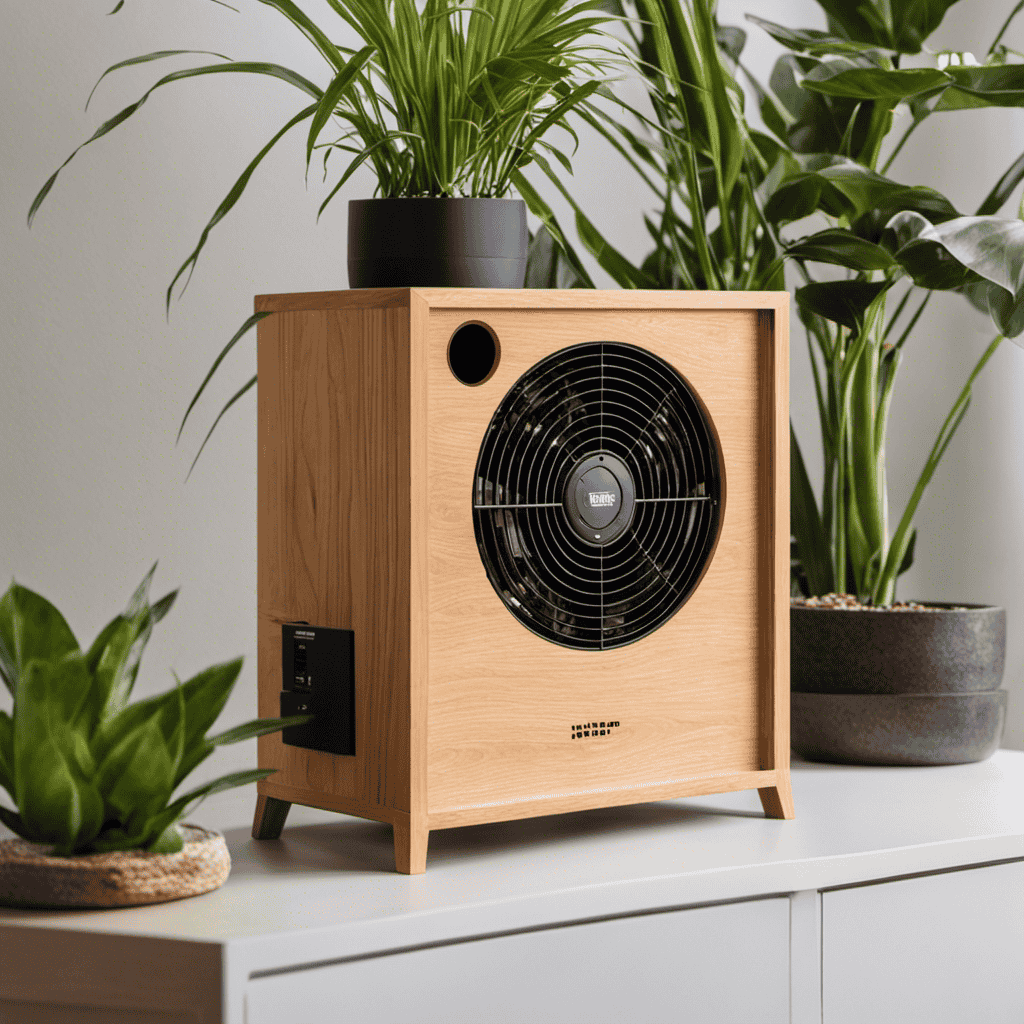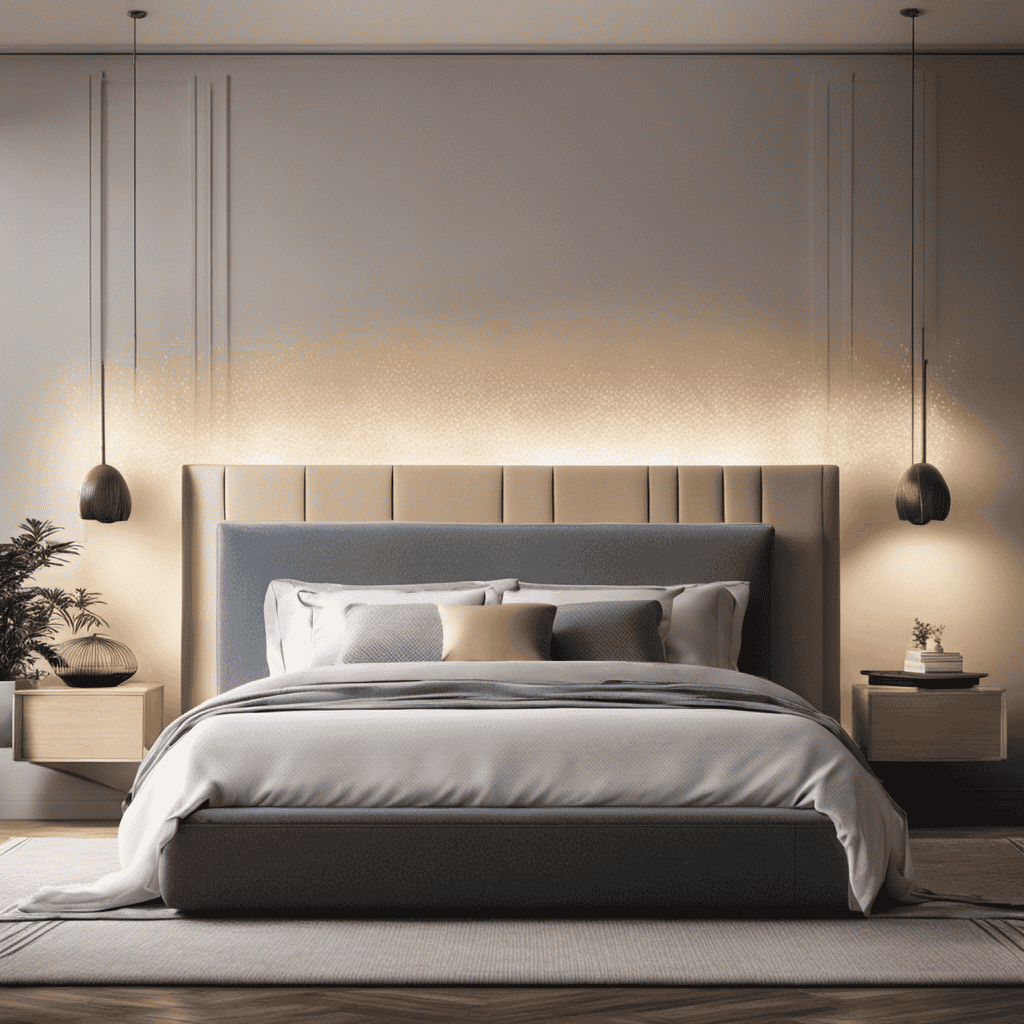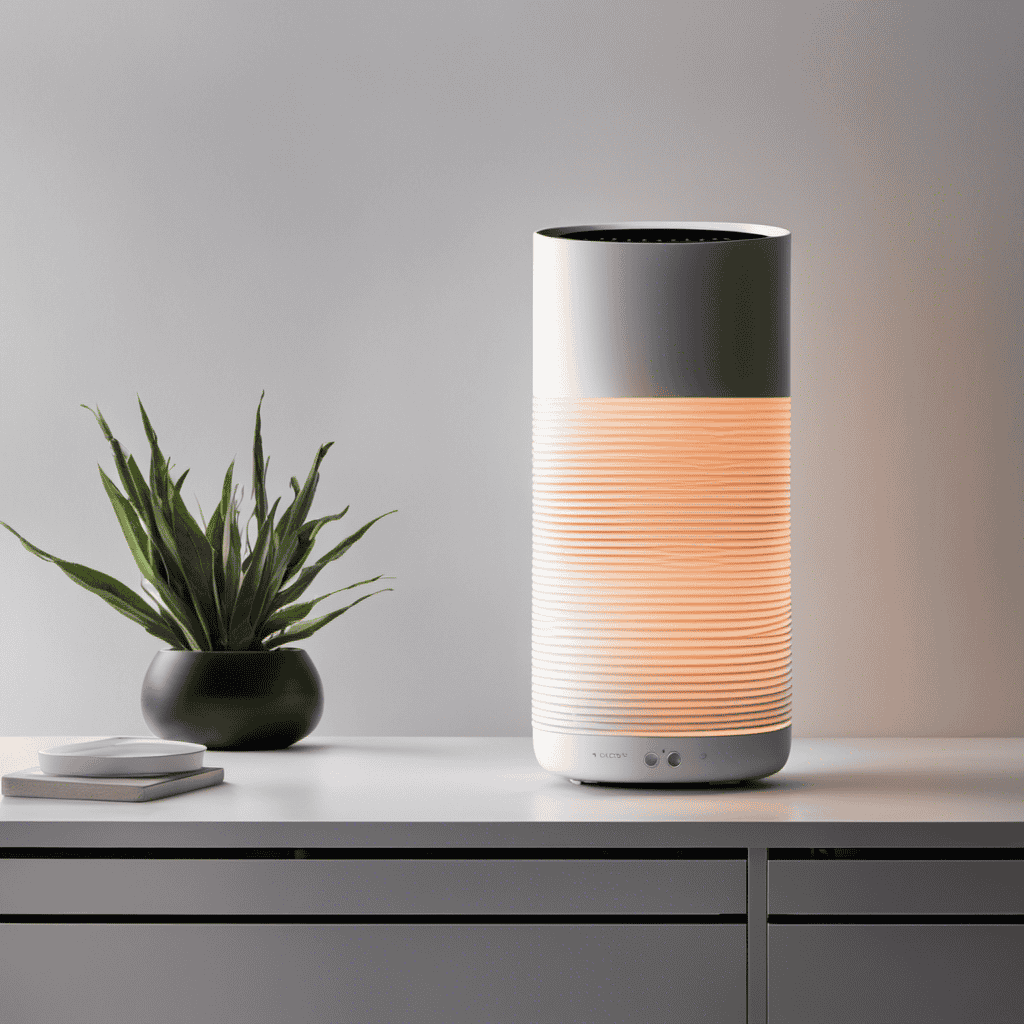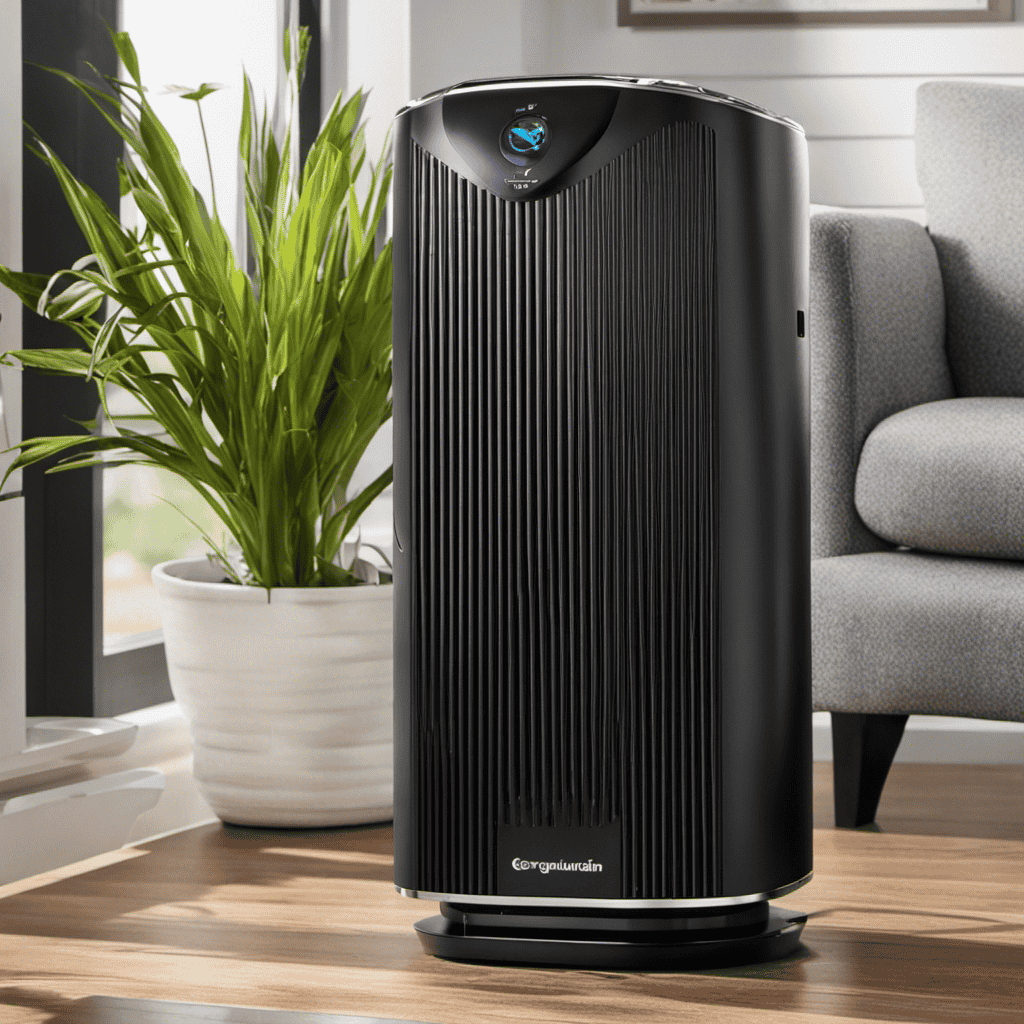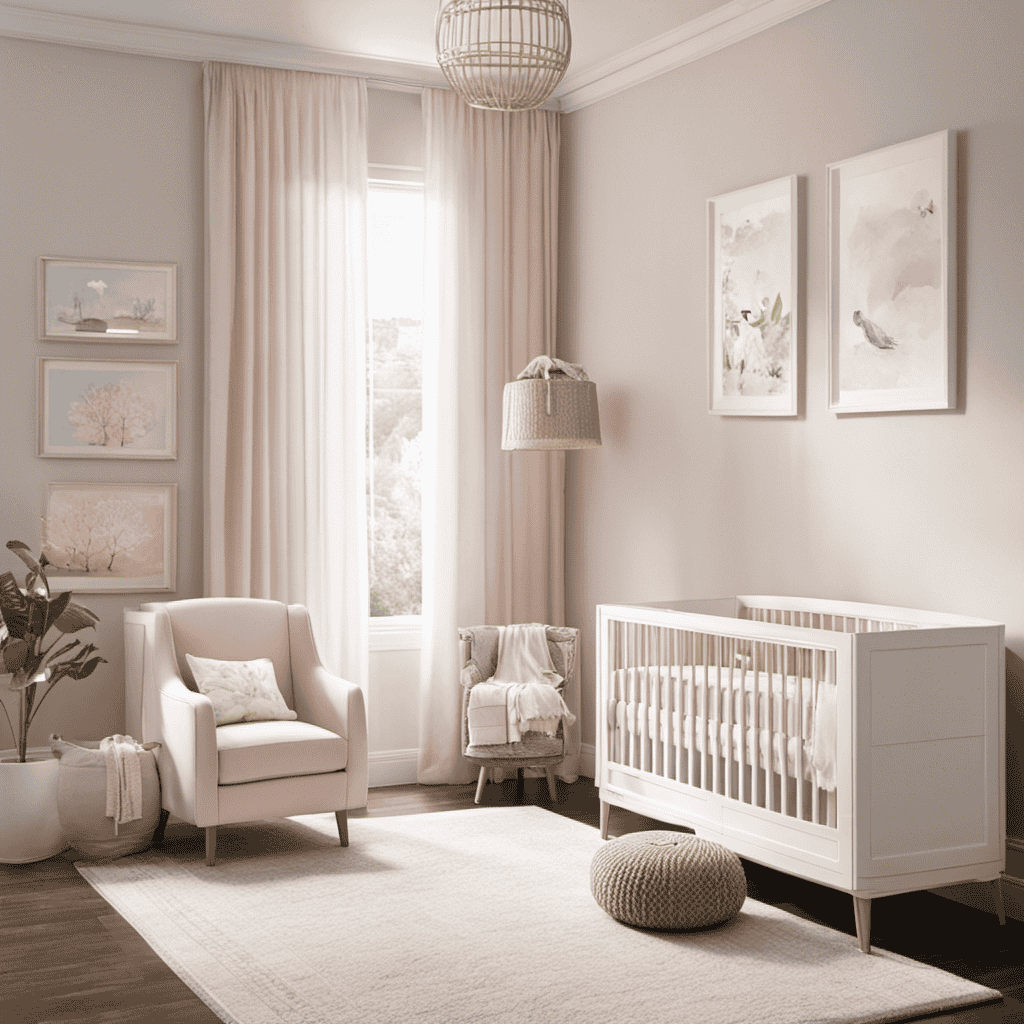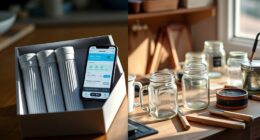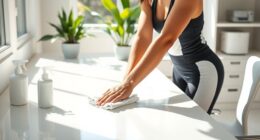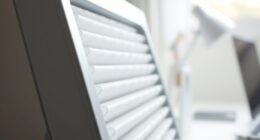I have always been worried about the air quality in my home, particularly with all the pollutants and allergens present. This is why I took matters into my own hands and decided to make my own air purifier.
In this article, I’ll share with you my step-by-step guide on how to make an air purifier right at home. With the right materials and a little bit of know-how, you’ll be able to breathe cleaner and fresher air in no time.
Let’s get started!
Key Takeaways
- Air purifiers are important for creating a healthier living environment and reducing the risk of health problems.
- HEPA filters and activated carbon filters are effective options for removing pollutants and odors from the air.
- Cost-effective alternatives like fabric, coffee filters, and pantyhose can be used to create homemade air purifiers.
- Regular maintenance and filter replacement are crucial for optimal performance and longevity of DIY air purifiers.
Understanding the Importance of Air Purification
You need to understand why air purification is important in your home.
Air pollution is a serious issue that affects our health and well-being. The effects of air pollution can range from minor irritations like allergies and respiratory problems to more severe conditions such as asthma, lung cancer, and cardiovascular diseases.
By purifying the air in our homes, we can reduce the risk of these health problems and create a healthier living environment. Clean air has numerous benefits, including improved sleep quality, enhanced productivity, and reduced stress levels.
Additionally, it can help eliminate unpleasant odors and remove harmful pollutants such as dust, pet dander, pollen, and volatile organic compounds (VOCs).
Investing in an air purifier is a simple yet effective way to ensure the air in your home is clean and safe to breathe.
Choosing the Right Materials for Your DIY Air Purifier
When it comes to choosing the right materials for a DIY air purifier, two key factors to consider are filter options for effectiveness and cost-effective material alternatives.
It is important to understand the different types of filters available, such as HEPA filters, activated carbon filters, and electrostatic filters, to ensure that the air purifier is effectively removing pollutants from the air.
Additionally, exploring cost-effective alternatives to expensive filter materials can help save money without compromising the purifier’s performance.
Filter Options for Effectiveness
There’s a variety of filter options available for increased effectiveness in making an air purifier at home. When it comes to air purifier brands, there are several reputable companies that offer quality filters.
Some popular options include HEPA (High Efficiency Particulate Air) filters, which are known for their ability to capture small particles such as dust, pollen, and pet dander. Another option is activated carbon filters, which are effective in removing odors and chemicals from the air.
Additionally, DIY air purifier hacks can also be utilized to enhance the filter’s effectiveness. For example, adding a layer of activated charcoal to a homemade filter can help absorb volatile organic compounds (VOCs).
It’s important to research and choose the right filter option based on your specific needs and the air quality in your home.
Cost-Effective Material Alternatives
The cost-effective material alternatives for filters include using fabric, coffee filters, or even pantyhose. These options can be a great way to save money while still effectively filtering the air in your home.
Fabric is a versatile option that can be easily cut to fit any size air purifier.
Coffee filters are also effective at capturing dust and other particles, and they are readily available in most households.
Pantyhose may seem like an unconventional choice, but they can actually be quite effective at filtering out larger particles.
These cost-effective alternatives allow you to create a DIY air purifier that is both affordable and efficient, improving the air quality in your home without breaking the bank.
Step-by-Step Guide to Assembling Your Homemade Air Purifier
When it comes to assembling your homemade air purifier, there are a few key points to keep in mind.
First and foremost, gather all the necessary materials and tools before starting the assembly process. This will ensure a smooth and efficient assembly.
Secondly, follow the step-by-step assembly instructions carefully to ensure that everything is put together correctly.
Lastly, don’t forget about the importance of regular maintenance and filter replacement to keep your air purifier functioning at its best.
Necessary Materials and Tools
You’ll need a few materials and tools to make your own air purifier at home.
The necessary materials include a high-efficiency particulate air (HEPA) filter, a fan, a plastic container or box, a power cord, and adhesive tape.
The HEPA filter is essential for trapping tiny particles such as dust, pollen, and pet dander.
The fan helps circulate the air through the filter, ensuring effective purification.
It’s important to consider budget constraints when purchasing these materials, as there are various options available in different price ranges.
Safety precautions must also be taken into account, such as ensuring the fan and power cord are properly insulated to prevent any electrical hazards.
Additionally, it’s recommended to follow the manufacturer’s instructions and guidelines for proper installation and usage.
Step-By-Step Assembly Instructions
To begin assembling your own air purifier, start by placing the fan on top of the plastic container. This step is crucial as the fan will be responsible for drawing in the air and pushing it through the filters.
Once the fan is securely in place, you can proceed to attach the filters. There are various alternative designs for filters, including activated carbon filters, HEPA filters, and even DIY filters made from household items like coffee filters or pantyhose. Choose the filter that suits your needs and attach it securely to the container.
It’s important to troubleshoot any issues that may arise during the assembly process, such as loose connections or inadequate airflow. By following these steps and troubleshooting tips, you can ensure a properly functioning air purifier that effectively removes pollutants from the air.
Now, let’s move on to maintenance and filter replacement, which are essential for the long-term performance of your homemade air purifier.
Maintenance and Filter Replacement
Proper maintenance and regular filter replacement are key to ensuring the longevity and effectiveness of your DIY air purifier. Here are some maintenance tips to help you prolong the filter lifespan:
-
Clean the pre-filter: The pre-filter is the first line of defense against larger particles. Regularly vacuum or rinse it to remove dust and debris.
-
Replace the HEPA filter: HEPA filters trap tiny particles, but they can become clogged over time. Check the manufacturer’s recommendations for filter replacement frequency and replace it accordingly.
-
Clean the activated carbon filter: Activated carbon filters absorb odors and chemicals. Gently vacuum or rinse it to remove contaminants and maintain its effectiveness.
-
Check the fan and motor: Ensure that the fan and motor are clean and running smoothly. Dust accumulation can strain the motor and reduce airflow, affecting the efficiency of your air purifier.
Exploring Different Air Purification Methods
There are various methods for purifying the air, and it’s important to explore different options.
One popular method is using air purifiers, which come in different brands and models. These devices work by filtering out pollutants and allergens from the air, improving indoor air quality.
The benefits of using an air purifier are numerous. Firstly, they help to remove harmful particles such as dust, pet dander, and pollen, which can trigger allergies and respiratory issues. Secondly, air purifiers can also eliminate odors from cooking, smoking, or pets, making your home smell fresher. Additionally, they can reduce the presence of airborne bacteria and viruses, helping to create a healthier environment.
When choosing an air purifier, it’s important to consider factors such as the size of the room, the specific pollutants you want to target, and the noise level of the device.
Overall, investing in an air purifier is a great way to improve the air quality in your home and enjoy the benefits of cleaner, fresher air.
Maintaining and Cleaning Your DIY Air Purifier
Maintaining and cleaning my DIY air purifier is essential for ensuring its effectiveness and longevity. Here are some cleaning techniques and troubleshooting tips I’ve learned along the way:
-
Regularly clean or replace the filters: The filters are the heart of the air purifier and can get clogged with dust and debris over time. Cleaning or replacing them will help maintain optimal performance.
-
Clean the exterior: Dust and dirt can accumulate on the exterior of the air purifier, reducing its efficiency. Wiping it down regularly with a damp cloth will keep it clean and free from debris.
-
Check for air leaks: Inspect the seals and connections to ensure there are no air leaks. Leaks can decrease the effectiveness of the air purifier and let contaminants bypass the filters.
-
Monitor the fan and motor: Keep an eye on the fan and motor for any unusual noises or vibrations. If you notice any issues, it’s important to troubleshoot and address them promptly to prevent further damage.
Enhancing the Effectiveness of Your Homemade Air Purifier
To improve the effectiveness of your DIY air purifier, consider using high-quality filters that are designed to capture smaller particles. By using these filters, you can optimize the filtration process and ensure that more harmful pollutants are removed from the air.
Additionally, improving airflow within your homemade air purifier can further enhance its performance. One way to achieve this is by using fans or blowers to increase air circulation. This will help the air purifier to capture more particles and improve the overall efficiency of the system.
Furthermore, placing your DIY air purifier in an area with good air circulation can also help to maximize its effectiveness.
Tips and Tricks for Improving Indoor Air Quality
Improving indoor air quality can be achieved by incorporating simple tips and tricks into your daily routine. Here are four effective ways to enhance the air quality in your home:
-
Improve ventilation: Open windows and doors regularly to let fresh air circulate throughout your space. Use exhaust fans in the kitchen and bathroom to remove pollutants and moisture.
-
Use natural air purifiers: Plants such as aloe vera, spider plants, and peace lilies act as natural air filters, removing toxins and releasing oxygen. Place these plants strategically around your home to purify the air.
-
Keep a clean environment: Regularly dust, vacuum, and mop to reduce the presence of allergens and pollutants. Use non-toxic cleaning products to avoid introducing harmful chemicals into the air.
-
Control humidity levels: Maintain a humidity level between 30-50% to prevent the growth of mold and mildew. Use dehumidifiers or air conditioners in humid areas, and use a hygrometer to monitor humidity levels.
Frequently Asked Questions
What Are the Health Benefits of Using an Air Purifier in Your Home?
Using an air purifier in your home has numerous health benefits. It improves indoor air quality by removing pollutants like dust, pollen, and pet dander, helping to reduce allergies, asthma symptoms, and respiratory issues.
Can an Air Purifier Remove Allergens Such as Pollen and Pet Dander?
Yes, an air purifier can effectively remove allergens like pollen and pet dander. It filters the air, capturing these common household pollutants, leaving the air cleaner and healthier to breathe. It’s like having a fresh breeze indoors.
How Often Should I Clean or Replace the Filters in My DIY Air Purifier?
I clean or replace the filters in my DIY air purifier every 3 to 6 months, depending on the manufacturer’s recommendations. This ensures optimal performance and removes any trapped allergens, such as pollen and pet dander.
Are There Any Specific Safety Precautions I Should Take When Assembling My Homemade Air Purifier?
Are there any specific safety precautions I should take when assembling my homemade air purifier? It is important to ensure proper ventilation, use the necessary materials, and follow the manufacturer’s instructions for a safe and effective DIY air purifier.
Can I Use Essential Oils or Other Fragrances With My DIY Air Purifier to Improve Indoor Air Quality?
Using essential oils with homemade air purifiers can improve indoor air quality, but there are pros and cons to consider. Some oils have antimicrobial properties, while others may cause respiratory irritation. It’s important to research and choose oils carefully for optimal results.
Conclusion
In conclusion, creating your own air purifier at home is a practical and cost-effective solution for improving indoor air quality. By understanding the importance of air purification and selecting the right materials, you can assemble an effective DIY air purifier.
Exploring various air purification methods and regularly maintaining and cleaning your homemade device will ensure optimal performance.
Remember, a breath of fresh air is like a ray of sunshine on a cloudy day, rejuvenating and invigorating both our bodies and minds.
